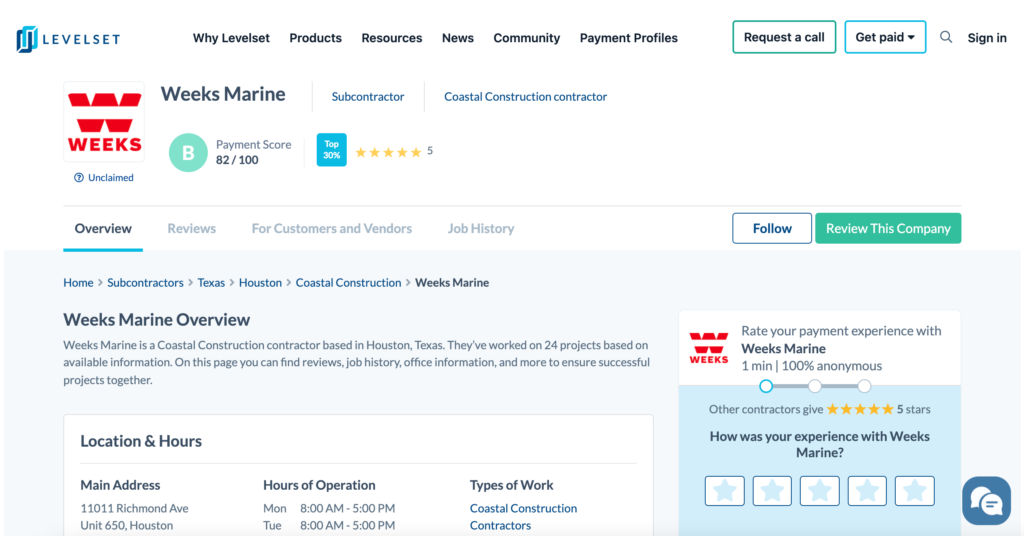
The construction industry is playing a key part in taking on the tough task of mitigating the effects and impact of climate change in the United States. This has been exemplified by recent high-profile flood mitigation projects from around the country, with companies in hugely disparate parts of the country working to hold back the impact of rising waters.
Kansas City Levee Flood Risk Management Project
Kansas City, Missouri/Kansas City, Kansas
An October 13, 2021, release from contractor Lane Construction Corporation noted that the company broke ground on a $258 million US Army Corps of Engineers project —the Kansas City Levee Flood Risk Management Project — aiming to reduce the risk of a levee breach in Kansas City.

According to the statement, the project protects 7.65 square miles of area which includes over 27,000 residents, 2,700 structures, and $10 billion in city investments.
Scott Mensing, Kansas City Levees Program Manager, noted in April 2021 that “The Kansas City Levees Project stands out as one of the largest and most complex ever undertaken by the Kansas City District, with life-safety and economic benefits to match.”
Though safety concerns of course make a huge impact, there’s a major consideration in place for the impact that the project will have on keeping major industries in the area running even when flooding occurs.
“There are also economic benefits regionally and nationally,” Mensing noted.” The system benefits nearly $10B of nationally significant manufacturing, warehouses, and transportation distribution centers. The leveed area is home to one of the largest railroad hubs in the nation, with rail yards and tracks owned and operated by Kansas City Terminal, Burlington Northern Santa Fe, Union Pacific, and Kansas City Southern. Collectively, these businesses provide tens of thousands of jobs.”
The Living Breakwaters
Staten Island, New York
A $107 million project in Staten Island, New York City, called the Living Breakwaters, is taking a look at ways of mitigating flood impact, even when it can’t fully stop flooding.
Contractor Weeks Marine, a maritime construction company operating nationwide, is in charge of constructing breakwaters that will soften the impacts of waves, storm surges, and sea level rises while serving as an important new habitat for marine life.

As Weeks Marine project manager Kevin Robinson noted, these projects require a specific type of expertise, as environmental and structural concerns work hand in hand.
The environmental aspect to the plan played a big part in why the particular contractor was chosen.
“The harbor is still a rich estuary, but if you look at Raritan Bay, it is a shallow, sandy bottom with a giant navigation channel dredged through it,” said Pippa Brashear, planning principal at the SCAPE architecture studio, which designed the Living Breakwaters project. “We said if we are going to put something in the water, we need to create something that is going to bring back that ecosystem function, and really serve the diverse species that are there… There is no excuse for having a hardened shoreline that is sterile.”
One main aspect that is keeping these types of projects in the foreground of concerns in the area is the reminder that many have of the devastation from Hurricane Sandy in 2012, which many still haven’t been able to recover from.
“[People living in this area] are probably already going to have to elevate homes and adapt over time, and understand that periodic flooding is going to happen,” said Brashear. “Living with water is going to be a part of that adaptation.”
Houma Navigation Canal Lock Complex and Grand Bayou Floodgate
Lafourche Parish/Terrebonne Parish, Louisiana
Climate change is having a significant impact on other projects as well.
On November 8, 2021, Louisiana Governor John Bel Edwards announced that the state had made significant progress towards the goal of keeping floodwaters from impacting the state, breaking ground on the Houma Navigation Canal Lock Complex and completing the Grand Bayou Floodgate.
“Today we are announcing two substantial advances in our efforts to provide Terrebonne and Lafourche parishes with 100-year storm surge protection,” Governor Edwards said. “The Grand Bayou Floodgate will honor [late Representative Reggie Bagala’s] memory while providing improved hurricane protection to the people and place he called home. This project, combined with the soon to begin HNC Lock Complex, are game-changers for the entire Morganza to the Gulf system.”
Thibodaux, Louisiana’s Sealevel Construction, Inc. — which markets itself as a company that “provide[s] turn-key services for the industrial, municipal, and oil and gas markets in the Gulf Coast region” — won bids for the construction of both the lock complex and the Grand Bayou Floodgate.

Though the major boost in the project is environmental, there’s no doubting how successful it is for the Sealevel Construction — the Grand Bayou Floodgate alone was a $20 million project, according to the governor’s release.
This is just one of the many projects Louisiana has announced recently pushing the importance of government spending on storm-related infrastructure — the state has previously put a lot of focus on the possibilities of storms impacting the Southern United States, and the funding spent has reflected it.
As Governor Edwards noted in August 2021, the state has spent more than $400 million on flood mitigation projects since receiving federal mitigation funding.